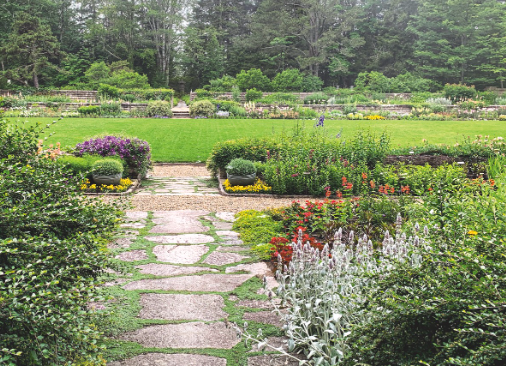Exploring the Enchanting Gardens Designed by Beatrix Farrand
Beatrix Farrand was a pioneering landscape architect whose gardens are celebrated for their beauty, innovation, and harmony with nature. With a unique vision that transformed both public and private spaces, Farrand’s work remains a source of inspiration for gardeners and design enthusiasts alike. In this article, we will explore the key elements of her gardens and highlight a few notable examples that showcase her incredible talent.
The Art of Plant Selection
One of the hallmarks of Beatrix Farrand’s design approach was her meticulous selection of plants. She had a knack for choosing flora that not only complemented each other visually but also thrived in their specific environments. Whether it was a stunning array of perennials in a sunny spot or a selection of shade-loving plants for a cooler area, Farrand understood the importance of creating balance. Her gardens often feature a mix of native and exotic plants, showcasing her belief that diversity adds both beauty and resilience to any garden setting.
Innovative Garden Layouts
Farrand was renowned for her thoughtful layouts that blended seamlessly with their surroundings. Her designs often incorporated natural landforms and microclimates, making each garden unique. For example, her work at the Dumbarton Oaks estate in Washington, D.C. exemplifies her skill in creating intimate spaces that invite exploration and engagement. The layered plantings and winding paths encourage visitors to discover hidden corners and enjoy the unique views. Such design principles can inspire modern gardeners to create their own inviting retreats.
The Influence of Historical Context
Farrand’s gardens were also deeply influenced by the architectural styles of her time. She often collaborated with architects to ensure that her landscapes harmonized with the surrounding structures. This synergy is evident in her work at the Abby Aldrich Rockefeller Garden in Maine, where the garden’s design reflects the far-reaching influence of early 20th-century design aesthetics. By appreciating historical context, contemporary gardeners can enrich their own designs, ensuring that they reflect their surroundings while paying homage to historical legacies.
In conclusion, Beatrix Farrand’s gardens serve as timeless examples of combining artistry with practicality. Whether you’re a seasoned gardener or just starting, her principles of plant selection, innovative layouts, and awareness of historical context can provide valuable inspiration for your own garden projects. Dive deeper into her work to discover how you can incorporate these elements into your own outdoor spaces, creating beautiful environments that echo the harmony and elegance of Farrand’s designs.

